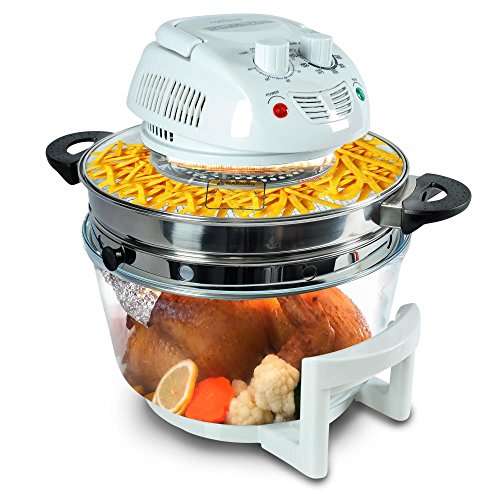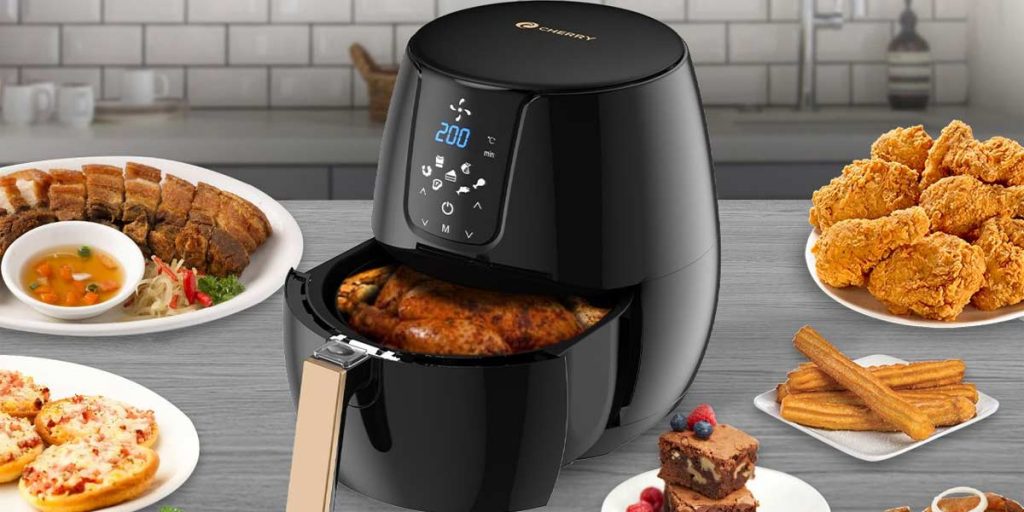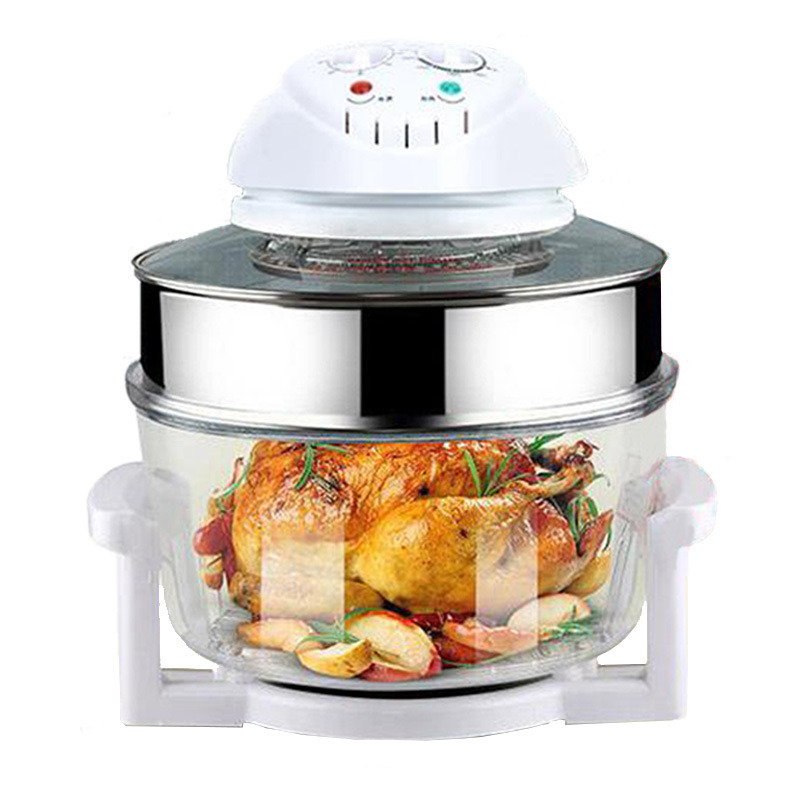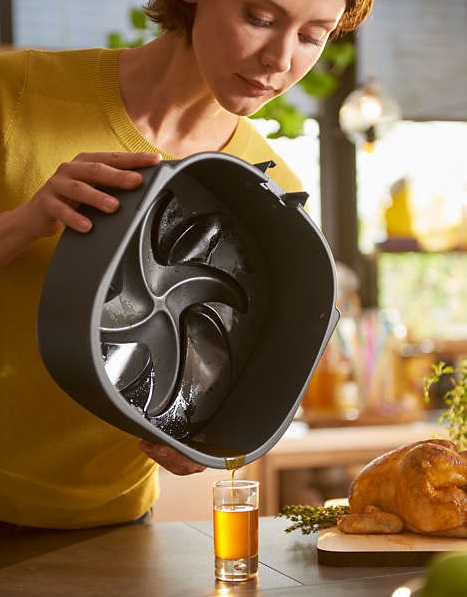Air Fryer Vs. Halogen Oven: Know The Differences

When it comes to kitchen cuisine, several “fryer” type equipment has been developed throughout the years to make meal prep, cooking time, and meal pleasure tastier, more efficient, and healthier. However, with so many appliances available and so many different names for these gadgets, it can be difficult to tell them apart. With home cooking growing more popular in homes seeking to reduce food-related expenditures such as restaurant dining, more families are contemplating acquiring one of the various compact countertop kitchen equipment on the market. Although these appliances cannot replace your standard oven, they can get close, which is one of the primary reasons they have become so popular. Aside from microwaves, the two most widely purchased countertop kitchen equipment are air fryers and halogen ovens. When you compare these two appliances side by side, you may wonder:
What exactly is the distinction between an air fryer and a halogen oven? After all, their exterior shell designs, sizes, and shapes are quite similar. The key distinction is that the air fryer uses a coil and convection mechanisms, whereas the halogen oven employs a light bulb and infrared radiation. The distinctions between these two low-fat fryers will be discussed in this piece and when one may outperform the other.
Part 1: What Is the Difference Between the Methods of an Air Fryer and a Halogen Oven?
While both the air fryer and the halogen oven use hot air as a heat source, the similarities in cooking methods end there since the air fryer is designed to produce fried dishes. In contrast, the halogen oven is designed to produce roasted foods. Let’s compare and contrast these two cooking ways.
Air Fryers

Regardless matter the kind of air fryer you buy, they all function the same way. Each one employs a coil, similar to those used in conventional ovens, as well as a fan. The coil warms up to the temperature you specify, and the fan distributes the hot air around the chamber. Heat is exchanged between the warm and chilled molecules of your food, distributing heat evenly throughout your meal. The fan circulates hot air in a round motion to guarantee that your dish is cooked all the way through and on all surfaces. Because the basket in which your food is placed is perforated, the bottom of your meal is also heated. The smaller the air fryer, the more intense the heat, which results in crispier food and shorter cook periods.
Halogen Ovens

Halogen oven cooking involves using a lamp, infrared energy, and radiation for heat transmission. According to Live Science, infrared light is radiant energy that cannot be seen with the human eye but can be felt as heat. It is a kind of electromagnetic radiation with various frequencies, including gamma rays, x-rays, visible light, radio waves, and microwaves. When you turn on the halogen oven lighting, it generates infrared heat, which cooks your food. Radiation heat cooks your food by directly heating the air molecules in its route, with no heat loss, making it highly effective at cooking rapidly.
Part 2: The Key Differences
An air fryer employs convection cooking, which essentially involves using a fan and exhaust system to circulate hot air across the meal and then vent it back out. An inbuilt fan distributes hot air uniformly throughout the food, which is why it takes less time than everyday cooking (which does not have an exhaust system or an internal fan) and guarantees that your food stays moist on the inside while browning on the exterior. A halogen oven emits infrared radiation, which causes the water molecules and organic substances (starch, sugar, protein) in your meal to vibrate as it travels through the air. The hot air is then circulated uniformly across your meal by an inbuilt fan, causing it to be brown and crisp up. The main distinction is that halogen ovens employ radiation energy to directly heat everything in their path, whereas air fryers use convection to heat food from a moving heat source.
How Does the Inner Assembly Differ Between These Two Appliances?

The only detachable part of an air fryer is the metal frying rack onto which you set your food. You may also remove the basket in which the metal rack is housed in some versions. The coil is towards the top of the gadget, while the fan is at the bottom, beneath the metal rack. Allow the gadget to pre-heat to the set temperature before placing your food straight onto the metal rack and closing the entire basket. The fan circulates hot air heated by the coil during the frying process, which fries your meal for you.
On the other hand, a halogen oven employs technology that isn’t quite as complex as it cooks with a bare lightbulb. A halogen oven features a detachable top. A heating chamber comprises a halogen lamp (lightbulb), a halogen ring (which contains halogen gas), low and high metal cooking racks, and a transparent glass bowl. Unlike the air fryer, the halogen oven allows you to see inside since the glass bowl, which serves as an effective heat conductor, is translucent. Set your meal in a bowl, plate, or cooking dish of your choosing, then place it on either the low or high metal cooking rack. The cooking rack may be removed and replaced, or you can keep it in place and just set your meal on top of your preferred rack by removing the oven cover. The difference in installation here is that the round halogen bulb and ring do not require pre-heating and will heat up quite quickly once powered on. When turned on, the halogen lamp emits high-density infrared light, and the fan within the machine circulates the hot air, ensuring that it is uniformly dispersed throughout your meal. The most important thing to understand about a halogen oven is that it will boil to the touch due to infrared light and radiation heat transfer.
Does the Difference in the Lid Matter?
Although whether or not a lid is detachable may appear to be a minor consideration, it may have a significant impact on whether or not you acquire the unit. Those who appreciate the notion of a removable top may prefer the halogen oven, but be cautious because there are two difficulties with it.
- The halogen oven’s lid will get incredibly hot. It’s hot enough to burn your hands or anything else that comes into contact with it.
- If you use a halogen oven, you will need unique clothes for scorching meals. You’ll need a place to rest the lid while stirring your dish, and it can’t be wood or a countertop surface. If placed on wood, it will warp, and it may produce significant flaws if placed on a countertop.
Because an air fryer features a detachable cover and a slide-out basket, it is the clear winner in this category. The slide-out basket not only has cool-to-touch surfaces for simple and safe handling, but it also does not take up extra counter space while in use.
Are Halogen Ovens Bigger Than Air Fryers?

The halogen oven takes the victory hands down when it comes to size. A halogen oven can accommodate a far bigger volume of food than a standard air fryer. Halogen ovens have a capacity of six to eighteen liters, making them ideal for cooking vast amounts of food. The disadvantage here is that the base of the halogen oven will be close to 41 centimeters, and the lid will be close to 31 centimeters. However, if you have a modest one-bedroom apartment or studio space, the air fryer will win since it can fit into even the tiniest of kitchens. Most air fryers will have a capacity ranging from one to seven liters.
Do Halogen Ovens and Air Fryers Work in Different Ways?
Controls will be available in both digital and analog versions for both sorts of devices. Those who wish to get a digital control or touchscreen model will pay a higher price. This is because digital controls are considered a luxury and are not required for the gadget to function. However, air fryers and halogen ovens will come with a plethora of pre-set cooking options in most situations. In this category, neither model has an obvious benefit or disadvantage, and it is more a matter of personal taste for the person making the purchase.
What Causes the Time Difference in Cooking Food?
When it comes to how quickly you can cook your food, a halogen oven will win since it can cook a larger volume of food in a shorter time due to the cooking process employed. However, while preparing the same amount of food, the time difference will be insignificant.
Is it healthier to use an air fryer instead of a halogen oven?
This is entirely dependent on how you choose to assess the nutritional value of your meals. Suppose you intend on creating your favorite fried foods. In that case, an air fryer will be a better alternative because it will allow you to eliminate both calories and unnecessary fat from your meal. If you plan on preparing large dinners that include healthier choices (non-fried items), the halogen oven will win. The sole disadvantage of using a halogen oven is that it is more likely to have higher fat concentrations, mainly if you use oil, because your food will not drop throughout the cooking process.
Is There a Difference in Cleanup Time?

Disconnect the airy fryer from the power source, allow it to cool, and then wipe clean the machine’s exterior. Remove the basket or tray and either set it in the dishwasher or clean it by hand. Both are quite quick and painless when it comes to cleanup. It’s the same for the halogen oven. Remove the racks and glass bowl from the unit and place them in your dishwasher after unplugging them from the power source. You may even hand-wash these if you choose. Allow the halogen oven to cool before filling it with warm water (about a third of the way up the glass bowl), dropping the racks into the bottom of the unit, adding a splash of soap, and starting the wash cycle. If you choose to hand-wash the bowl or remove it to put it in the dishwasher, be cautious since it becomes quite slippery when wet and can quickly be dropped due to its weight.
Articles and Questions Related to if halogen ovens use a lot of energy?
Halogen ovens require somewhat more electricity than gas and electric ovens. Still, because they are faster, the operating time of each session is shorter, and the amount of electricity consumed is lower. A halogen oven is predicted to cost roughly $25 per year to operate, while an electric oven is expected to cost closer to $30.
Is it possible to use a halogen oven as an air fryer? Well, as we’ve seen, the methodologies differ slightly. If you can’t decide between these two appliances, you may combine them and obtain a 2-in-1 solution like this.











